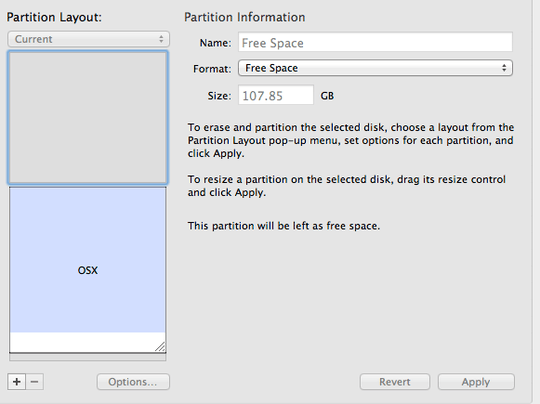0
I have an OSX partition that does not take up the whole drive. Somehow, I managed to damage the unallocated space in a way that disk utility does not let me use it even though it is labeled "free space" in diskutility.
When I try and format my partition that I intended to use as windows, i get this message:
Partition failed with the error:
MediaKit reports not enough space on device for requested operation.
 My goal is to have a windows partition alongside my current OSX one.
My goal is to have a windows partition alongside my current OSX one.
Option 1:
What tools should I use and what should I try to format that partition without touching my OSX one?
Option 2: Should I instead try to create an image of the disk and clean everything then restore the partition after i install windows? How would I do that?
Is this on a mac? – Autumnal – 2013-05-11T19:51:52.870
yes its on mac . – stackOverFlew – 2013-05-11T19:52:49.690
Do not think of installing windows before osx at all then. – Autumnal – 2013-05-11T19:53:19.097
hm ok. what should I do then? – stackOverFlew – 2013-05-11T20:01:37.663
Does Disk Utility let you create any other kind of partition in the free space? Can you create a JHFS+ ("Mac OS Extended, Journaled") in that space? What if you set it to just 100 GB instead of the full 107? – Spiff – 2013-05-11T22:31:35.387
wont that corrupt my other partition? – stackOverFlew – 2013-05-11T22:46:43.667
Partition failed with the error:
Couldn’t modify partition map because file system verification failed. – stackOverFlew – 2013-05-11T22:51:06.747
This may have the answer to that problem: Here
– HelpingHand – 2013-05-15T19:20:54.697